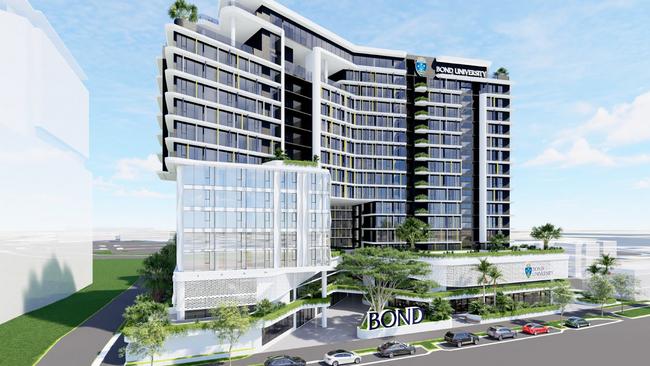Why I’m outrageously optimistic about one type of property
Amid a national housing crisis, there’s one demographic shift that holds a lot of untapped potential for residents and investors.

There are two property classes that I am outrageously optimistic about when I look at population forecasts: retirement living and purpose-built student accommodation.
The large Baby Boomer cohort (born 1946-63) now shifts into the 75-84 age group that makes up the lion share of residents in retirement villages – a marvellous opportunity as long as providers manage to cater to the preferences of the most individualistically and independently minded retiree cohort as of yet.
Today we shall focus on purpose-built student accommodation, explain why it’s a growth industry, and explore its untapped potential to improve social cohesion in Australia.
The number of international students enrolled in Australia totalled 711,000 for the period of January to July in 2023. That’s a 34 per cent increase compared to the previous year but still 45,000 students short of the pre-pandemic high.
Considering the current enrolment of Chinese students (152,000) is still 60,000 down compared to 2019 we can expect to surpass pre-pandemic enrolment levels very soon. In any case, the recovery of our international education sector occurred faster than industry experts predicted.
That’s partly because, globally, the demand for English-speaking university degrees isn’t slowing down. Asian nations continue their transformation into knowledge economies and need to upskill their local workforce. Also, brand Australia seems to not have taken any damage internationally regardless of how you might have experienced the pandemic locally.
Plenty of families across the world are willing to pay juicy enrolment fees to send their kids to an Australian university.
One in six international students ends up migrating to Australia permanently. Financially, these are the best migrants for Australia. We didn’t need to pay for their upbringing, they paid for their tertiary education, and immediately start to pay taxes.
As the Intergenerational Report noted, Australian-born residents are a net economic expense to the public coffers while overseas-born residents are a net economic benefit – as a German-born migrant this is what I am reminding my Australian-born toddler of every night.
Now all we need to do to make sure we profit from the boom in international education is to house all these new people while we are experiencing a nationwide housing crisis and a big fat skills shortage.
Let’s first think through where we need to build housing for students. Most universities are in our big cities and most campuses are centrally located. This is where purpose-built student accommodation enters the stage. This property class solves several issues.
Firstly, it enables the housing of many students close to campus. That’s important since international students tend to not have cars.
In 2010, during my academic years, I wrote a thesis on international student housing in Melbourne.
A couple of important learnings about the housing decisions of international students are still relevant.
PBSA and residential colleges on campus are the only shared accommodation options that international students (or their parents) can secure from overseas sight unseen.
Local students tend to live in share houses and vacant spots in these houses are being handed out off market. Either to friends of friends or to strangers that get interviewed in the kitchen over a beer or coffee.
The parents of international students are very nervous about their beloved babies moving overseas for the first time. They demand that their kids have housing secured before they move to Australia.
Therefore, international students must move into PBSA. Travelling to Australia and then hoping to score a room in a shared house is not an option for many. Sure, that type of housing is more expensive than sharing a house or apartment with two flatmates.
Often international students live in PBSA for less than a year before they move into a shared house on the free rental market to reduce their housing costs.
Since arriving in Australia, they made a few friends so recruiting potential housemates is easy.
Property investors will note with delight that the price gap between PBSA and a shared house has been shrinking during our national housing crisis.
As housing on the general rental market becomes more expensive, residents in PBSA have fewer reasons to leave. That trend alone makes PBSA an attractive asset class.
Socially, PBSA in its current configuration must be viewed quite critically. Occupied almost exclusively by international students, the property class unintentionally drives the social divide between local and international students.
Friendship formation at university follows an almost comical pattern. You befriend whoever you are spending time with in your first few weeks. That’s it. That’s the most important thing. Sure, you will make some friends later in your university journey, but you met the majority of your friends in your first two weeks.
This is where student housing and the academic calendar contribute to social segregation within the university community.
International and local students don’t tend to live in the same housing – no chance to make cross-cultural friendships there.
International students are also invited onto campus and into their PBSAs about a month before local students tend to show up. This is well intended, of course.
Give newly arrived international students a chance to acclimate to their new surroundings, make their transition easier.
In these initial few weeks, international students are surrounded by other international students and together they experience the fun adventure of discovering a new destination.
Once regular class starts, they have already established an almost exclusively international social network that they will draw from.
On campus local students will observe international students banding together and conclude they have no interest in making local friends.
This way we end up with a university campus that is quite unintentionally segregated.
I wouldn’t be surprised if we slowly see more local students move into PBSAs. As shared housing options became increasingly hard to find and ever more expensive, why wouldn’t Australian students (especially interstate students) consider PBSAs as well? The unaffordable rental market might be a force fighting segregation on campus. Co-housing local and international university students will go a long way in strengthening social cohesion in Australia.
Local students will benefit from having personal connections into India, China, and other trading partners of ours. International students will not live socially segregated and receive first-hand insights into Australian life. This is the best way of transferring social and cultural knowledge to newly arrived residents.
I see demand for university education in Australia only going up. We are probably not going to solve our national housing crisis all that quickly either.
Building high-rise apartments specifically for students in a narrow set of geographies is a fast way of providing much needed housing.
In the process we can even improve social cohesion on campus. Purpose built student housing has a lot of untapped potential.
Simon Kuestenmacher is co-founder and director of research of The Demographics Group.




To join the conversation, please log in. Don't have an account? Register
Join the conversation, you are commenting as Logout